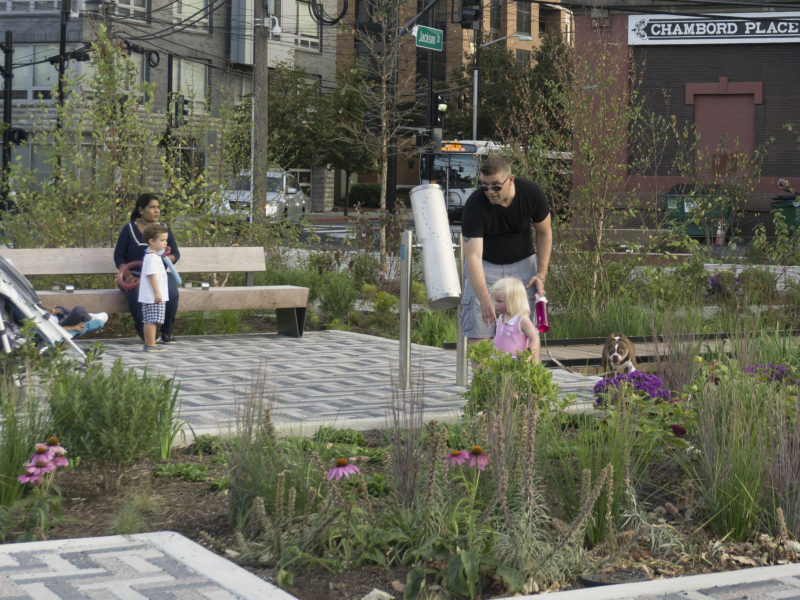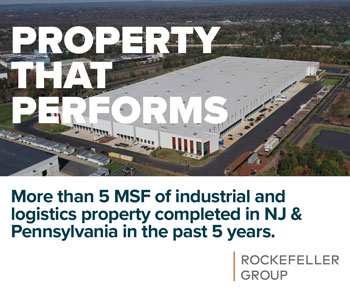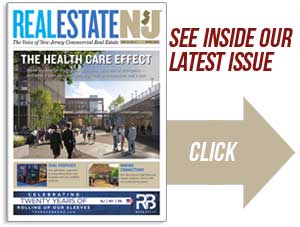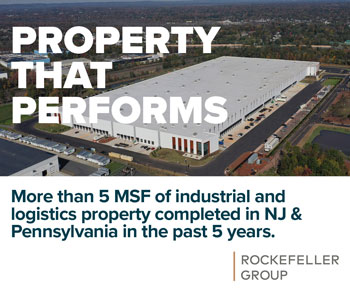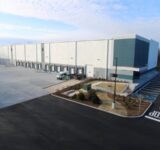The Southwest Resiliency Park in Hoboken uses green infrastructure to manage stormwater and reduce flooding. Pictured are rain gardens and pervious pavement, which allow stormwater to seep into the ground rather than run off into sewers. — Courtesy: City of Hoboken
By Peter Kasabach and George Vallone
On Dec. 3, the New Jersey Department of Environmental Protection published amendments to the state’s Stormwater Management Rule (NJAC 7.8) that, when adopted, will change fundamentally the way stormwater management systems are designed in New Jersey. The key amendment will replace the existing requirement, which asks developers to incorporate so-called non-structural strategies “to the maximum extent practicable,” with a firm requirement to use a technique known as green infrastructure in new development.

What is green infrastructure? It’s an approach to managing stormwater and snowmelt in ways that return water to the ground near where it falls, or that collects water for non-potable uses such as irrigation or external cleaning. Examples of green infrastructure installations include rain gardens, bioswales, rain barrels and cisterns, green roofs, pervious pavements and constructed wetlands. The objective with all green infrastructure installations is to keep stormwater from running off into storm drains or sewer systems, picking up pollutants along the way and sometimes flooding the system and nearby neighborhoods before carrying those pollutants out into local waterways.
Green infrastructure has been proven as a stormwater management strategy, and has become mainstream in many U.S. communities large and small, including Philadelphia, Seattle, Milwaukee, Chattanooga, Syracuse, Fort Worth, Cincinnati and Washington, D.C. Green infrastructure is flexible and incorporates redundancy by distributing stormwater management facilities around a site. For builders and property owners it is often cheaper to install and maintain than traditional gray infrastructure, it lowers energy costs, it makes commercial areas more attractive for foot traffic, and it adds to a property’s value. Communities and the environment reap the benefits of green infrastructure through reduced flooding, cooler and cleaner air, more beautiful neighborhoods, better physical and mental health outcomes, greater and cleaner groundwater recharge, and less pollution in our rivers, lakes and streams. Green infrastructure can also help to mitigate

some of the effects of a changing climate.
The change to New Jersey’s Stormwater Rule will bring with it a variety of benefits. But developers need not wait for the new rule before designing projects with green infrastructure. The Developers Green Infrastructure Task Force, a partnership between New Jersey Future and the New Jersey Builders Association, has produced the New Jersey Developers Green Infrastructure Guide. It’s a full overview of the “what, why and how” of incorporating green infrastructure into any project, and it’s available at no charge for any builder or developer who wants to start using it. (There is also a recently introduced companion guide to help municipal officials who want to incorporate green infrastructure into public projects.)
An excellent example of effective incorporation of green infrastructure into a development project can be seen at the New Jersey Manufacturers’ corporate campus in Hammonton. Stormwater management for the project had to comply with the stringent requirements of the Pinelands Comprehensive Management Plan, but the NJM Insurance Group wanted to go further, and aim for handling nearly all stormwater on site. Engineers designed a fully integrated system consisting of a number of bioinfiltration basins, parking lot bioretention swales, a wetland basin, and a bioretention island, with the combined ability to treat and infiltrate large volumes of runoff.
In addition, a 120,000-gallon belowgrade rainwater capture and reuse system was constructed that harvests roof runoff for use in onsite irrigation, thus reducing the facility’s demand for water from the sensitive Kirkwood-Cohansey Aquifer.
There’s no question, this holistic approach to water management is the wave of the future — and for good reason. Green infrastructure makes a project look better and work better, and it adds value. It makes good business sense. When the state rule change goes into effect and everyone is required to build green infrastructure into their projects, the competitive advantage will go to those who got a head start.
Peter Kasabach is the executive director of New Jersey Future, a nonpartisan nonprofit organization that promotes policies and practices for sustainable growth and development in New Jersey.
George Vallone is president of The Hoboken Brownstone Co., a Hudson County-based developer, and a member of the Developers Green Infrastructure Task Force.

